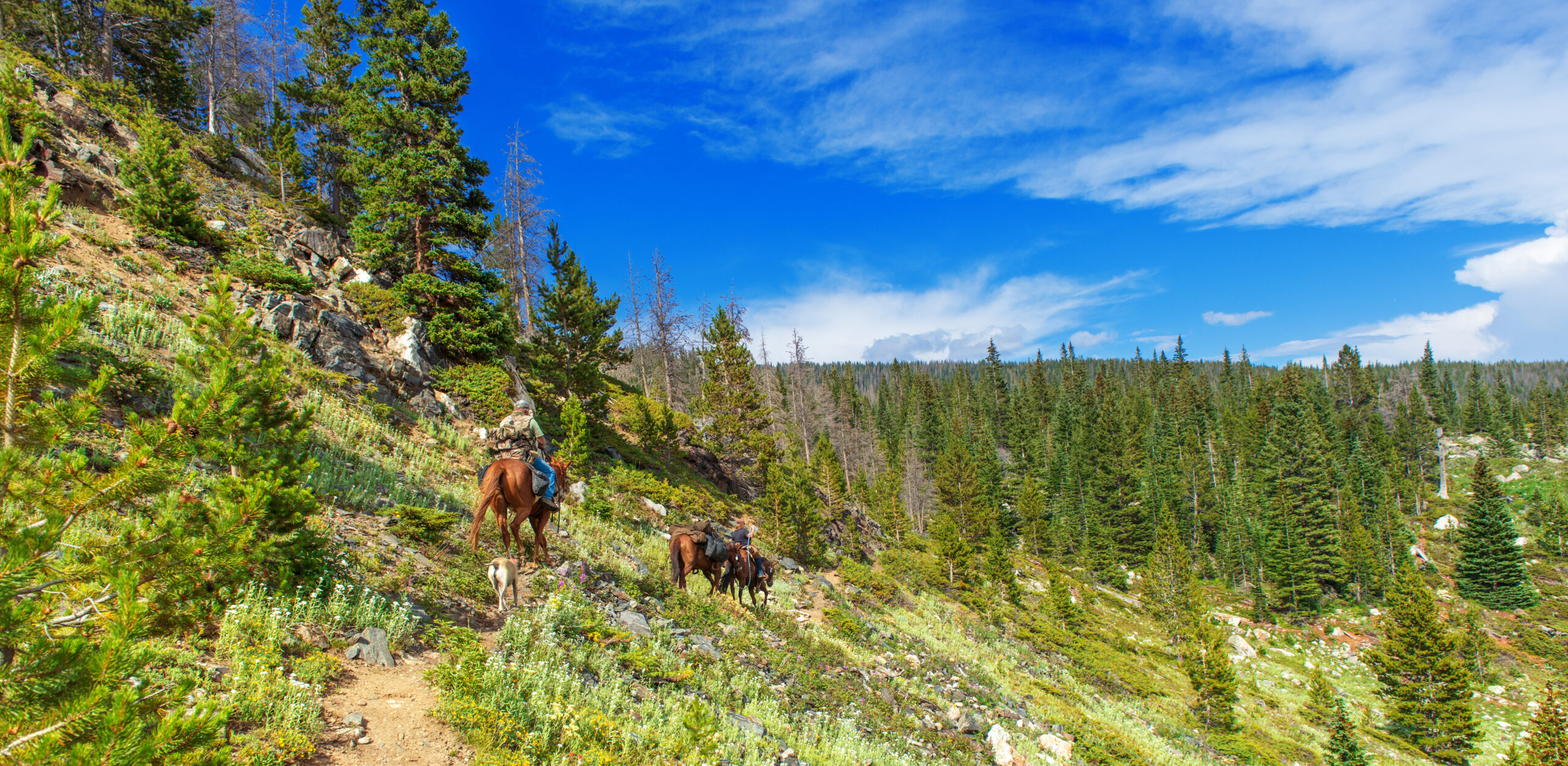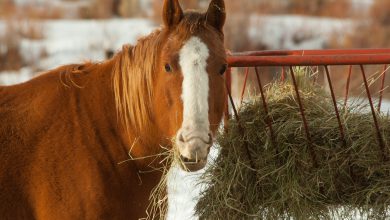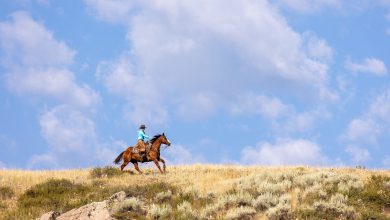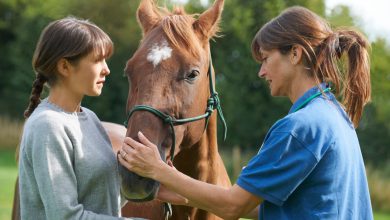
For many trail riders, a day ride isn’t long enough to scratch the itch of seeing new country horseback. Many people enjoy camping with their horses, especially when the weather means longer days, sunny skies, and lots of time in the saddle. For some, camping with their horse means staying in their living quarters horse trailer, and setting up panels. For others, it means packing a tent and a highline to tie horses out. However you do horse camping, here are 4 ways to keep your trip an enjoyable one for you and your four-legged trail companion.

Gear Check
Nothing can ruin a trail ride trip faster for your horse than carrying around a saddle that’s soring him all day. Doing a gear check before you head out for a horse camping adventure is important not only for the safety of you and your horse, but for his comfort as well. Don’t wait until an overnight camping trip to try out a new saddle for the first time. Without knowing how well that saddle fits, you run the risk of soring your horse up before the trail fun really starts. Did you purchase new saddle bags? Do they smell new or different? Let your horse (who has a keen sense of smell) give them a sniff before throwing them over your saddle.
After you’ve checked the fit of your tack, including saddle and bridle fit, now determine the condition of all your gear. This means checking out latigos and billets for signs of wear or cracking, ensuring chicago screws are secured, and that your cinch isn’t dangerously frayed. Ensure all necessary gear outside of your tack is in good condition, such as camping equipment like tents and cooking supplies. Pack spare items like ropes, blankets, and first aid kits.
Prepare Your Horse
If this is your first foray into the wilderness with your horse, be sure that you’ve put in the work at home to prepare him for scenarios that might arise. Round pen training, although valuable, doesn’t mean your horse is prepared to face bicycles, cattle, wildlife, water crossings, or other things you might encounter on the trail.
Although it might be difficult to train your horse at home, for everything you’ll encounter on the trail, do what you can. If you’re riding a green or young horse, consider going out with a group of riders on seasoned trail horses, to support you and your horse through the experience. Remember, this should be a positive experience for you both, so put in the time at home to further your horse’s training before taking him out on a horse camping adventure.
[Read: Julie Goodnight’s Tips to Navigate Water Crossings on the Trail]It’s also important to build your horse’s stamina before embarking on a long ride. It’s unfair to let your horse sit all winter, then pull him out to make a 10 mile trek up steep terrain on the first nice day of the year. Spend time to gradually build your horse’s fitness, so he can carry you to greater heights, safely! Avoid scheduling your farrier appointment for the day before you leave, so you have time to let your horse become adjusted to his new shoes or trim.
[Read: Stacy Westfall’s Tips to Improve Your Horse’s Fitness]Pack the Essentials
It can be easy to forget essential items, because they seem so *obvious* that we don’t write them down since we could NEVER forget them, right? If that sounds like something you’re familiar with, make a list of everything you need to bring for you, your horse, and your rig, and write down everything. Even the simple things, like feed, and water for your trailer.
Pack a first aid kit for human and horse. Ensure that the spare tires for your pickup and trailer are in good, working order. Do you have a jack in your trailer in case you blow a tire? Or maybe you’ve been so busy packing for your horse that you haven’t stopped to check the weather to determine what clothes you should bring. Remember that in the backcountry, weather can change quickly, so consider bringing layers. And don’t forget the personal items you’ll carry on your ride to keep you comfortable as well, such as sunscreen, bug spray, water, and snacks.
Do Your Research
When making campsite reservations for your horse camping trip, it’s crucial to conduct thorough research to find suitable locations that will suit your needs. Look for horse-friendly campsites equipped with amenities like hitching posts or corrals to ensure the comfort and safety of your horse during the stay. Verify the availability of water sources for the animals and inquire about any additional services provided for horse care. If you aren’t hauling in your own water, you’ll want to be sure there’s a hydrant nearby your campsite.
Furthermore, plan your routes thoughtfully by selecting trails that are suitable for horses in terms of terrain and difficulty level. Check for any trail restrictions, seasonal closures, or special permits required for equestrian use. Prior knowledge of the trail conditions allows you to prepare adequately, ensuring a safe and enjoyable adventure for both you and your equine companion while minimizing negative impacts on the environment.
Be a Good Guest of Nature
Beyond doing the research to find a suitable camping spot, it’s important that we are good neighbors to other people enjoying the outdoors. Compliance with specific regulations at the campsite is also important to maintain a harmonious relationship with the environment and other campers. Be aware of rules regarding where horses can be tied or penned, waste disposal guidelines, and any restrictions on riding in certain areas.
Respecting these regulations not only ensures a pleasant experience for all but also contributes to the sustainability of the campsite for future visitors. When considering these factors, adhere to Leave No Trace principles to minimize your impact on the surroundings. Clean up after your horse, pack out all trash, and avoid overgrazing by rotating grazing areas or carrying supplemental feed.
We all want to preserve the beautiful country we ride in. By being mindful of the ecosystem’s delicate balance, you help maintain the natural beauty of the landscape and safeguard it for future generations of riders and wildlife alike.



